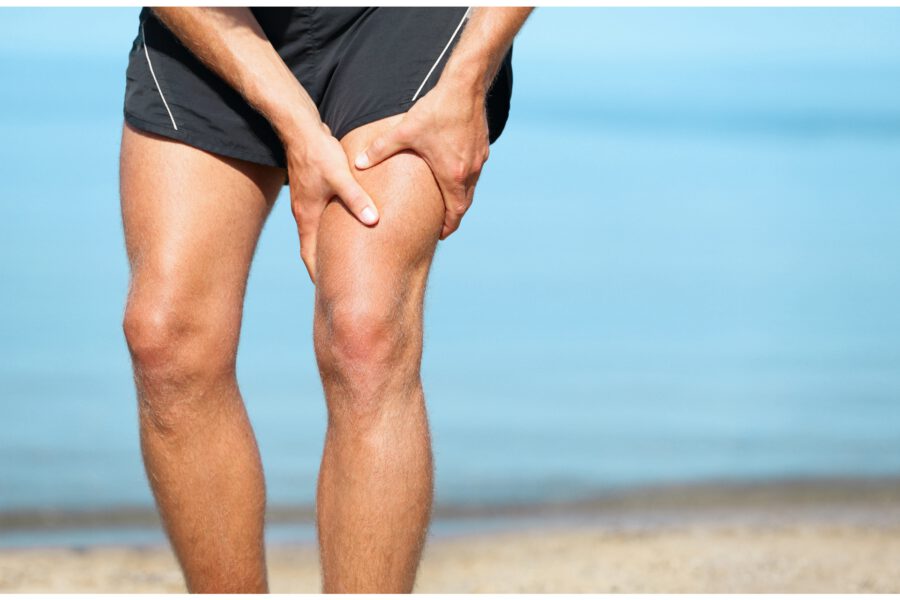4 Quick Fixes for Your Muscle Soreness
Chances are you are already familiar with feeling sore after a day or two of an exercise. This is called delayed-onset muscle soreness or DOMS, making specific movements painful and difficult.
Although DOMS is a mild byproduct of exercise and could go away within a few days, it is still one of the most common reasons for decreased athletic performance. Aside from experiencing pain, DOMS can also temporarily reduce your muscle function and joint range of motion, making you feel stiff and uncomfortable.
In some cases, it can also alter your muscle sequencing and recruitment patterns, causing unusual stress on the ligaments and tendons. Without proper recovery, this could increase your risk of injury.
This article will show you scientifically proven relief from DOMS to improve your recovery and prevent potential injuries.
The truth is experts still haven’t figured out the exact cause of why you feel sore after intense physical activity. However, the current research studies suggest DOMS results from a series of physiological effects in response to microscopic tears experienced during resistance training or unfamiliar exercises.
Unfamiliar sporting activities and eccentric exercise can expose the muscles to microscopic trauma leading to inflammatory response and pain.
Uncoordinated and unfamiliar sporting activities have a higher tendency to cause DOMS. This could be the result of insufficient coordination between the muscle fibers resulting in overstressing several muscle fibers during high demanding exercise.
Think of a time when you have to jog down a hill or lower a dumbbell during a bicep curl. These movements recruit fewer muscle fibers and force your muscles to lengthen under pressure and expose them to a lot of stress.
Here’s an active recovery workout you should try:
1. Sleep
As simple as it may seem, sleep is your body’s natural way of restoring itself. Growth Hormone (GH) surges in secretion during deep sleep, ensuring sufficient muscle recovery and growth. More importantly, sleep relieves muscle tension and reduces pain by allowing your muscles to relax.
Long-term lack of sleep can result in impaired GH production and lead to chronic pain development.
Try this: Set consistent bedtime hours to condition your body and mind for sleep. In addition, eliminate all forms of distraction such as phones or TV 1 hour before bedtime.
Performing low-intensity exercises on the muscles you worked for a few minutes after your workout or a day after your training can significantly reduce muscle soreness.
It works by increasing the blood flow in damaged muscle tissues and helps flush out toxins due to inflammation resulting in better and faster recovery.
Try this: For your lower body, low-intensity cycling or walking for 10 -15 minutes is ideal for keeping a good amount of circulation to the big muscles of the glutes and thighs. Light resistance of rowing or reverse fly exercise for the upper body would be enough to promote blood flow to your upper body.
Self-myofascial release can be done using a foam roller, massage gun or even a tennis ball. This therapeutic technique became popular with the fitness community due to its relief from muscle pain and helped them feel more “loose”.
Multiple studies show that self-myofascial release is beneficial in reducing the effect of muscle soreness while improving muscle activation and range of motion.
Try this: When doing a self-myofascial release, focus on the muscles you’ve worked on that day, especially the areas where you feel most sore. Then, keep the pressure on the muscle for a few minutes until you feel its “release”.
Here’s a quick stretching workout you should try:
Studies show that including fish in your diet or supplementing with Omega-3 can significantly improve anabolic signaling, enhancing muscle repair and growth while reducing muscle soreness.
Fish oils and other related fatty acid components have properties that can effectively combat inflammation and improve immune function.
Try this: After working out, ingest 2-5g of Omega-3 supplement to minimize muscle soreness and promote muscle recovery. Omega-3 also allows your body to maintain muscle mass which is highly beneficial as you age.
The key to proper recovery from DOMS and ensuring that you can still maximize your gains is adjusting and adapting your program based on your body’s reaction to exercise.
If you are feeling very sore, lower the volume or intensity of your exercises. You can also modify your schedule and target other muscle groups while your aching muscles are still recovering.
If you are a beginner or just detrained, it is vital to work your way gradually in your program. Take a few weeks to start at the volumes and intensity you’d typically do. This would give time for your body to adapt to your new routine.
Delayed-onset muscle soreness or DOMS is a normal reaction of muscles to unfamiliar exercise and can go away within a few days. However, it can negatively impact your athletic performance.
To minimize muscle soreness and improve your muscle recovery:
- Ensure that you have good quality sleep.
- Perform active recovery exercises after your workouts.
- Do self-myofascial release for 10-15 minutes on sore muscles.
- Take an Omega-3 supplement or eat more fish.
